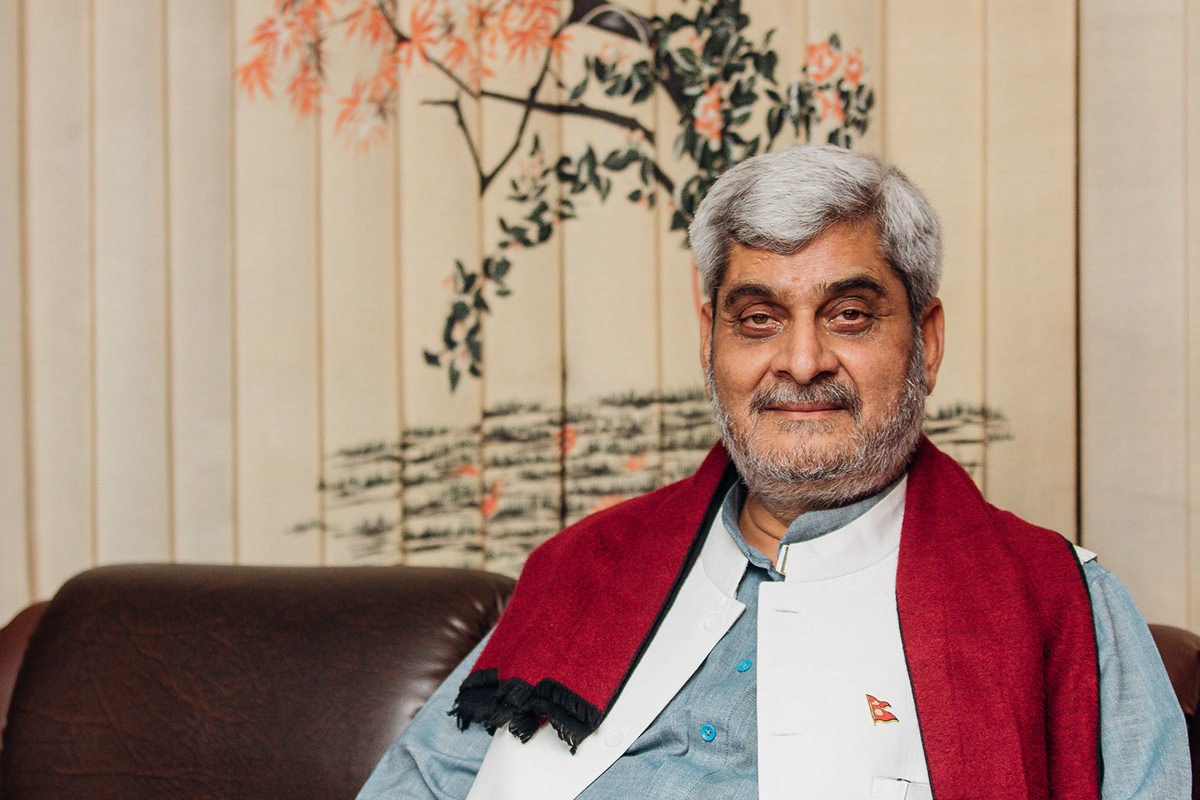
The second wave of the Covid 19 pandemic that erupted from mid-April claimed the lives of 1.4% from 344,779 people infected across the country, despite administration enforcing tough lockdown to restrict movement of people to stem the spread of coronavirus.
Though the country initiated inoculation drive from January 27 with an to aim immunise its entire eligible population within three months; it failed. Vaccine procurement was mired in controversy and lack of transparency. Till date, senior citizens who had received the first dose of the Covishield vaccine are waiting for the second dose which is in a controversial procurement quagmire. Nepal in the mean time received one million Vero cell vaccines in donation from Chinas. The Covid 19 Vaccines Global Access (COVAX) program has also been affected as manufacturers have failed to provide vaccines as assured to the COVAX basket.
Against this backdrop, the country’s health facilities encountered unprecedented challenges as hospitalisation rate of Covid 19 patients went up exponentially and there were severe shortages of adequate medicine, oxygen, ventilators, etc. Medical human resource was also overstretched and there was panic amidst the public. Additionally it must be pointed out that huge parts of rural and remote Nepal have been left out of the government’s radar for health access.
Business 360 caught up with the now erstwhile Minister for Health and Population, Hridayesh Tripathi to learn about the efforts of the ministry to combat the pandemic.
Tripathi is seasoned politician who has fought for a long time to establish issues of Terai-Madhesh into the mainstream agenda of national politics. Within days of this interview, Tripathi resigned from his position after Prime Minister KP Sharma Oli decided to reshuffle the cabinet following the dissolution of the parliament last month. This interview was conducted when he was the country’s health minister. Excerpts:
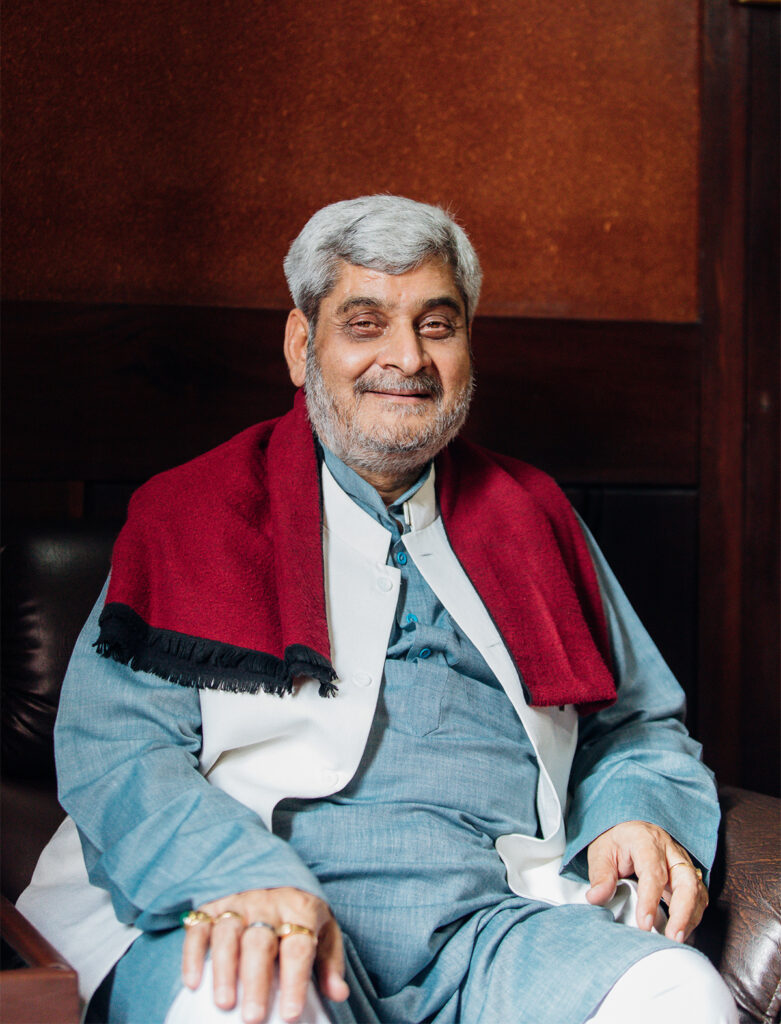
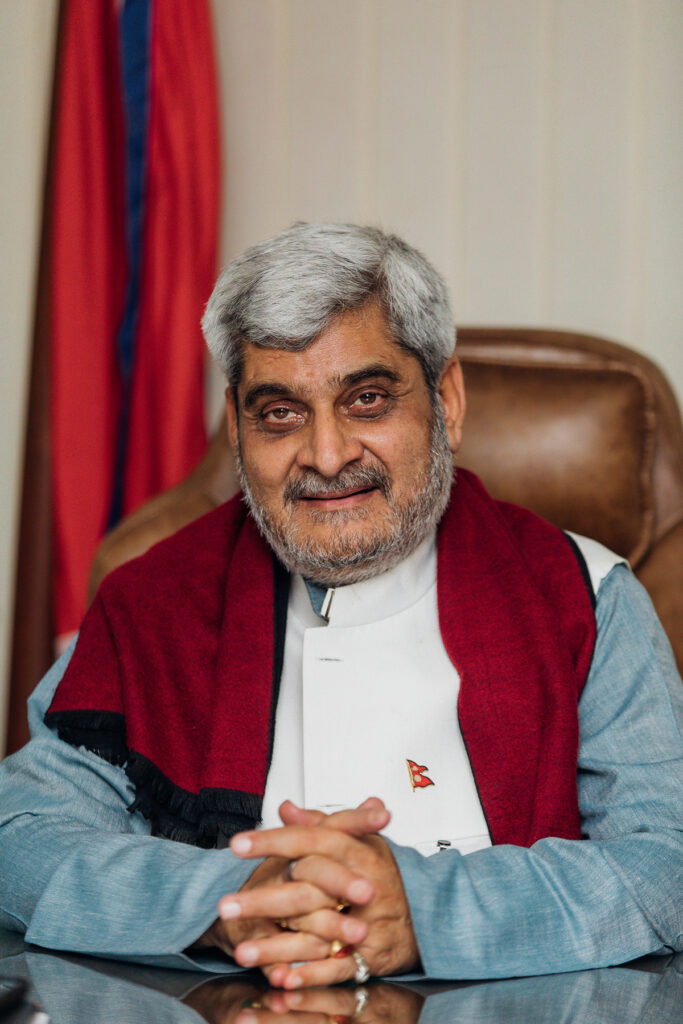
What are the main challenges before you as the Health Minister of Nepal?
When I had assumed office on December 25 last year, I was focused on reviving the reputation of the Ministry of Health and Population. I had promised three things while assuming charge of the ministerial portfolio-assuring vaccines against Covid-19 and its management; facilitation for the execution of 5, 10 and 15 bed hospitals to the local level governments, and readjusting health workers facing trouble from the new adjustment of heath workers/professionals in the federal structure. I was working in that spirit to fulfill my commitments. In the meantime, the country encountered a second wave of the Covid 19 pandemic and it became more lethal and massively spread across the country posing threat to the human lives. Hospitalisation rate went up substantially as respiratory diseases escalated among the infected which ultimately created pressure on health facilities. Demand for oxygen surged nearly six folds than the normal consumption, it was more challenging to manage oxygen, ventilators and critical care units and intensive care units for covid patients. What I realised while combating the unprecedented challenges is we had to have a unified health system. Though we have a federal structure and allocation of businesses accordingly but we need a unified health system to transfer knowledge, technology, research findings among others for effective treatment and service delivery. We have set up a unified health system as well as expedited the expansion of health facilities across the country. The new wave of coronavirus is emerging from different variants of coronavirus in different parts of the globe and we are not in a risk-free zone. We must be well equipped because we don’t have any proven technology for the treatment of Covid patients. Indeed, vaccine is an important solution but still it is not the final solution. We are moving ahead to provide available solutions to our people and this is an important step towards the Covid 19 response from the government.What is the government leadership and your ministry doing to ensure vaccines for all Nepalis?
We are in correspondence with the governments of vaccine manufacturing countries on multiple level. We have succeeded in few cases like China has recently announced to donate one million Vero Cell jabs, the United States also made a commitment recently. It is difficult to manage the required doses but it is not impossible. We are in correspondence with India, China, United Kingdom, Russia and the United States. The President and Prime Minister are in talks with their counterparts and I am also in correspondence with my counterpart health ministers of vaccine manufacturing countries. The Ministry of Foreign Affairs is also facilitating to seal the vaccine deal, however two major reasons: higher demand than production and storage of vaccines are hindering the equitable distribution of vaccine. We are lucky to have initiated and immunised what we were able to do, more than five dozen countries have not even received a single jab so far in South Asia. One of the major reasons that hinders immunisation campaigns is lack of supply from COVAX as promised. COVAX, vaccine pool established from the donation of advanced nations to ensure equitable distribution of vaccines, has promised to provide 14.8 million jabs which makes up 20% of the population eligible for vaccine. However, manufacturers supposed to supply vaccines for COVAX were unable to dispatch as promised. So far Nepal has received the first consignment of 348,000 jabs under the COVAX facility. At the onset when I had assumed office, I had said that the vaccine is not only a medical tool, it is also a commercial commodity as well as political commodity. Analysing the ongoing vaccine diplomacy, we can say that the vaccine has purely become a political commodity. Despite the challenges, we are trying to procure vaccines from all potential sources.
The Indian government had extended a million doses of Covishield in donation and Government of Nepal had sealed a deal to procure another two million doses and you have gone on record to say that procurement process for another five million doses from the same source, Serum Institute of India is taking place. Why are we relying on single source to procure the vaccines when it is clear that a single source cannot supply sufficient vaccines as per our requirement in the current time?
It is not true that we were relying on a single source. We are in correspondence with all manufacturers asking for the quantity they can supply, the rates and potential delivery dates. Some are yet to respond; some were not interested to disclose price. We’ve started process to procure from those who have expressed interest to supply vaccine that is viable for us provided the circumstances like maintaining temperature while transportation to the vaccine centres across the country meets our requirements.Johnson and Johnson has received approval from World Health Organisation, Pfizer has also developed a vaccine that doesn’t require the cold chain. Besides Johnson and Johnson vaccine is a single dose-shot. Do you have plans to procure vaccines like Johnson and Johnson?
We are trying to procure Johnson and Johnson vaccines as well and seeking support from the US government for facilitation. We had also discussed with the Ambassador of the United States to Nepal for needful facilitation. We have dispatched a letter to Johnson and Johnson requesting to supply five million doses. We had also approached Moderna to supply vaccines to Nepal but the company has said that it can give us vaccines only in 2022. Other companies have asked us to correspond through their SAARC/local representative and we are in touch with them.It is evident that Nepal is reeling under procedural issues of procurement. What sort of procurement process are you following?
The government has procured directly from manufacturer till now and only the Serum Institute of India has supplied vaccines to us. We don’t have confusion in the procurement process, it is either government to government (G2G) or government to manufacturer. Apart from that, the cabinet has allowed any private party to procure vaccines from the government of the manufacturing country or from manufacturers directly and they are allowed to add only 10% profit margin to their cost. However, Nepal government will not procure from the private sector like the government did in medical equipment. If private parties are able to bring vaccines utilising their networks, they are themselves responsible for distribution and sales.Why do you think the private sector could not do it then?
Private sector players were claiming that the government is creating obstruction for smooth supply before the approval was issued. Though it is more than two months, not even a single party has provided justifiable basis that they will be able to supply vaccines.The Ministry of Finance has said that there is committed resource worth Rs 48 billion last December to procure vaccines, and it has signaled inefficiency of MoHP to procure vaccines. How do you explain this?
That is true that they have ensured resources for vaccine procurement as allowed by our budgetary system. The World Bank Group and Asian Development Bank have promised to provide support for vaccination, and based on their commitment the Ministry of Finance has ensured the resources. However, the current challenge is less to do with funds and more to do with availability and readiness of the manufacturer country’s government to supply vaccines. The resources allocated by the Ministry of Finance is the taxpayers’ money and must be utilised efficiently. Considering the sensitivity of the issue, I am reiterating my stance that I will not sign on procurement related files that do not follow the procurement rules and established norms.China has donated a million Vero Cell doses as a goodwill gesture. Do you plan to procure vaccines from China?
We’ve decided to distribute those jabs to 60 to 64 years age group across the country. Similarly, we will distribute China-aided jabs to our population living in the northern belt bordering with China (Tibet). The reason behind distributing doses to the northern belt population is because they’ve socio-cultural and economic relations with China. They’ve trade relations with China, and we’ve allocated 100,000 jabs to inoculate 50,000 population of Nepal’s northern belt. The Ministry of Foreign Affairs has initiated talks with Chinese authorities through Nepali ambassador of China and they have in principal agreed to supply. Following that, the Department of Health Services (DoHS), under our ministry sealed the ‘non-disclosure deal’ with the concerned agency. Non-disclosure agreement is a confidential agreement that can’t be disclosed with a third party regarding rate, quantity and delivery time. To materialise the procurement, the DoHS has asked them about the quantity they can supply, tentative time period for delivery, and rate and we’ve yet to get a response.About the expansion of health facilities, why is the government restricted?
We have tried to develop 500 bed covid hospital at the newly constructed building of Bir Hospital and brought necessary equipment too. Following the issuance of Ordinance for Covid 19 Crisis Management 2078, we have envisioned to develop Bir Hospital as a Unified Command Hospital. The Ministry of Health and Population has appointed Dr. Jageshwor Gautam as the head of the Unified Command Hospital. He will look after the entire treatment system of the hospital except its medical education. The central command of Bir Hospital can bring regional hospitals into its network. Recently, 50 additional beds for Covid 19 patients came into operation in the new building of Bir Hospital and we’ve plans to expand it up to 500 beds in the immediate future. We are paying our full attention to expand health facilities as there are projections that third wave might affect us in October and November. Experts have said that the third wave could affect children as the first one had affected the senior population and the second hit the youth, which is why we are preparing for ICUs/ventilators for the treatment of young age population. We are expanding facilities nationwide. New oxygen plants are being added as inbuilt system on hospital premises. We’ve policy to keep liquid oxygen tank at 200 bed hospitals. We’ve adopted this policy measure for a smooth and reliable supply of oxygen in an uniform manner and it doesn’t require oxygen cylinders. Oxygen plants are added at TU Teaching Hospital, Bheri Zonal Hospital and Nepalgunj Medical College. Similarly, in Dharan, Bharatpur and other hospitals, we are going to install oxygen plants immediately. We have approved plans to expand 2,000 HDUs (high dependency units), 500 ventilators. We are receiving ventilators from our friendly nations as donation and we’ll also procure if that is insufficient. We will disclose whitepaper regarding the government expenses for the treatment of Covid 19 and procurement of medical equipment.
PCR testing facility is not available in remote villages; your comments.
We have dispatched 1.2 million antigen detection rapid diagnostic test (Ag-RDT) kits to seven provinces. Provincial governments have handed over to districts and local level. The major reason behind this is to isolate infected people from the community. We’ve received these Ag-RDT kits as donations from our friendly nations. We are ready to procure if that bcomes insufficient. Antigen test is must for screening infected and non-infected. We will carry out PCR test among those found infected during antigen test to prevent massive transmission in communities.What are the plans to cope with community transmissions?
Only way to effectively execute prevention measures are to strictly abide with health safety protocols and it is fundamental to control the pandemic. We have failed to abide with health safety protocols in a strict manner. The MoHP has repeatedly requested since the beginning to resort to online classes, stop celebrating functions, gatherings and seminars. But no one listens and the consequences are in front of us.What are you doing to crackdown on the ill practice of rampant black-marketing of life saving medical equipment including oxygen concentrators and cylinders, as well as attacks on health workers?
It is a painful incident that happened at Bheri Zonal Hospital and we condemn it. Attack against health workers will be punished under the due process of law. Recently the President issued an Ords Act 201, which has harsh punishment measures for those vandalising health organisations and attacking health workers. Those vandalising health institutions will be jailed for 2 to 5 years or pay penalty worth Rs 2 lakhs to Rs 5 lakhs or both jail and penalty can be enforced. If anyone attacks health workers and hurts them, s/he will have to undergo three years in jail or pay Rs 3 lakhs in penalty or both. Those accused for attacking the health workers in Bheri Hospital are facing court case. The culprits of black-marketing of cylinders will be penalised after proper investigation based on grievances. Simultaneously, during the period when we had witnessed short supply of cylinders, the government had also intervened in the market through managing efficient distribution to the hospitals and we’ve also dispatched donated cylinders across the country to avoid black marketeering. Concerned agencies are monitoring the market to crackdown on ill practices in supply of medical goods. Oxygen supply is restored in a smooth manner. We have also extended permission to setup liquid oxygen industry on a large scale. If everything goes well, the government might provide subsidies on electricity used to operate liquid oxygen plant as moderate size plant consumes nearly 5MW electricity. If everything goes as per plan, we will have additional 60 tons capacity liquid oxygen plant from the private sector by coming November.You have committed to a white paper on Covid 19 response. Can you also explain the dilemma regarding free treatment facilities to Covid 19 patients?
The government has signed agreement with hospitals and these hospitals have to submit the details of covid patients. They will get Rs 3,500 per day for mild cases, Rs 7,000 for moderately critical and Rs 15,000 for patients getting treatment in ICU. We are reimbursing the claims cautiously through cross-verification to ensure that hospitals have not also charged the patients. We are doing cross-verification from patients and their caretakers. Those hospitals charging patients directly themselves are not coming to sign the agreement with MoHP. Concerned agencies have taken action against the hospitals when the inspection found them charging Rs 2,000 per hour for oxygen.The government has been distributing 70 types of life-saving drugs for free and bearing the cost of the treatment of catastrophic diseases such as cancer, heart, kidney, head injury, sickle cell anemia and spinal injury. How sustainable is this? And what are your plans to strengthen thr health system?
Covid 19 will be controlled within few years as it is a global challenge and the entire world is putting effort to control the pandemic. It has created pressure on our health system, it has also dragged our attention to the fragility of our health system and we will definitely strengthen it. Rather than talking big and working less, I am focused on not letting the health system erode further. The critically ill patients of aforementioned disease will get continuous support as well as life saving drugs. This is the duty of the state to ensure affordable and accessible quality healthcare to our population. In the past, only the influential would benefit from the resources allocated to the deprived and critically ill patients. Gradually, we have reformed and minimum support is extended by the state for those suffering from these life threatening diseases. We also have to manage available human resources. As a minister, I will always work to boost the morale of our health workers.Why was the hazard allowance not channelised properly for front line health workers?
There was mismanagement in the past. The ministry has dispatched the hazard allowance to the concerned hospitals. Distribution of hazard allowances was carried out by the management of the hospital. The management of hospital had distributed hazard allowance in socialistic principal to entire health workers rather than being focused on front liners. We have corrected this through inbuilt system to ensure only those exposed to hazard or front liners will receive the hazard allowances.
Published Date: June 30, 2021, 12:00 am
Post Comments
E-Magazine
RELATED In the Lead


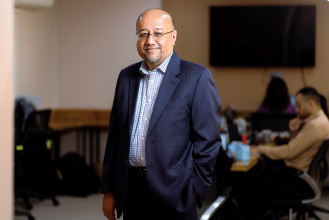
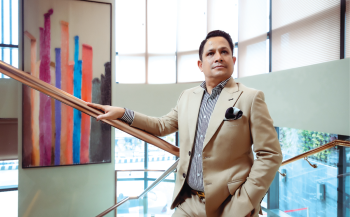
-1757917838.jpg)